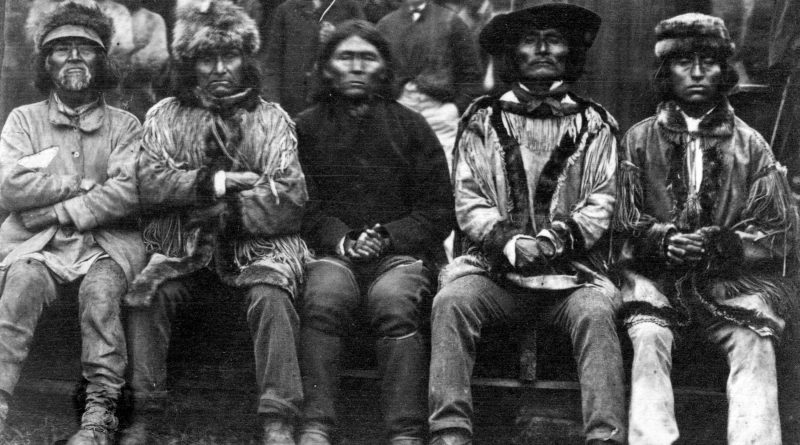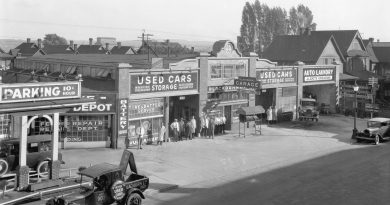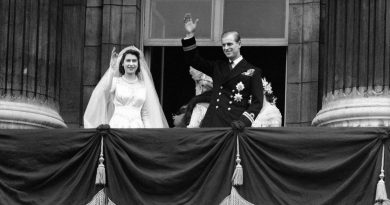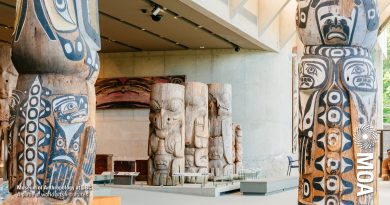1757 – 1884
Above: Five First Nations Men, Circa 1860
[City of Vancouver Archives, A-6-150]
You’ll note that these years include events for which we don’t have a specific date. If YOU know the specific date of an event shown there, please notify us . . . and cite the source! Many thanks!
1757
June 22 George Vancouver was born in King’s Lynn, Norfolk.
1791
April 1 HMS Discovery, Capt. Vancouver’s ship, sailed from Falmouth to explore the Pacific coast of North America.
July 5 Spanish explorer Lieutenant Jose Maria Narvaez, the first European to see this area (he beat George Vancouver by a year), anchored west of Point Grey and explored the mouth of the Fraser River.
1792
April 30 HMS Discovery, Capt. Vancouver’s ship, enters the Strait of Juan de Fuca.
June 13 Vancouver enters and explores Burrard Inlet, which he names Burrard’s Channel.
June 22 Captain Vancouver and Spanish Captain Dionisio Galiano, each at the head of an exploring expedition, are startled to meet each other at what is now English Bay. The two men hit it off, and Vancouver named Spanish Banks as a tribute.
1808
July Simon Fraser and his men, who have just descended the river that will later be named for him, explore the native village at Musqueam. They are chased off by men of the tribe, and retreat back up the river.
1816
The Nine O’Clock Gun is made by H & C King in Woolwich.
1824
James Macmillan of the Hudson’s Bay Company, with a party of men, struck out into the interior of the province from the mouth of Surrey’s Nicomekl River. They went up the Nicomekl until their boats could go no farther, then portaged to the Salmon River, which flows into the Fraser about 50 kilometres east of its mouth. MacMillan marked a tree at that location—he called it the Hudson’s Bay Tree—and when he returned two-and-a-half years later found that tree and built the first Fort Langley by it.
1825
March 19 The Hudson’s Bay Company opened Fort Vancouver on a bluff above the north bank of the Columbia River where the city of Vancouver, Washington is now located, directly across the river from Oregon State. The fort becomes the company’s western headquarters. It’s situated on the north bank of the Columbia because it’s thought that river would eventually become the border between Canada and the U.S.
1827
July 30 Construction on the first Fort Langley begins.
1833
February 20 James Murray Yale took command of Fort Langley and a Hudson’s Bay Company farm was established at Langley Prairie. The farm will become very successful, shipping salted salmon to Hawaii.
1834
Toronto incorporated (as York).
1835
October The Hudson’s Bay Company steamship Beaver leaves England for Burrard Inlet.
1836
April The Beaver arrives from England, six months after leaving. It is the first steamship to reach the Pacific Ocean.
1838
June 28 Victoria crowned Queen, succeeding King William IV.
1843
July The Hudson’s Bay Company establishes Fort Camosun at the southern end of Vancouver Island. By December it will be known as Fort Victoria.
1851
Captain Alexander McLean settled at Pitt Meadows.
1853
The first dairy farm in Greater Vancouver was operated in Ladner by Alexander McLean. After being flooded out in 1853 McLean moved his family and their 50 cows to the west bank of the Pitt River in what is now Port Coquitlam.
1855
January 1 Ottawa incorporated.
1856
April 16 Governor James Douglas announced the discovery of gold in British Columbia. Not long after, the first of 25,000 American prospectors arrive.
Three cannon are shipped to British Columbia from England as part of a larger shipment to “the provinces of Canada.” One of them is today’s Nine O’Clock Gun.
1857
John “Gassy Jack” Deighton, born in Hull, Yorkshire, started working in B.C. as a steamship operator in the late 1850s.
January 23 Vancouver, Washington is incorporated.
December 28 Governor James Douglas of Vancouver Island proclaims the Crown’s control of mineral rights on the mainland.
December 31 Ottawa declared capital of Canada.
1858
August 10 A crew of men under the direction of A.C. Anderson, Director of Road Operations, starts British Columbia’s first road construction; a road from Tsawwassen Beach, south of Ladner, overland to Fort Langley.
November 19 Governor Douglas proclaims mainland British Columbia a colony.
The government reserve that later becomes Stanley Park is set aside.
1859
February 14 Queensborough was proclaimed as the site of the new capital of British Columbia. Later it will be renamed New Westminster. (Historical coincidence: Oregon became a state on the same day).
June 13 Coal was discovered at what was promptly named Coal Harbour.
The Royal Engineers arrived in British Columbia. They will have a great impact on early Metropolitan Vancouver, overseeing the construction of roads and bridges. The Engineers contract to have the “North Road” built. It exists today, the boundary between Burnaby and Coquitlam, and the oldest road in metropolitan Vancouver.
By Christmas 1859, eight months after arriving in New Westminster, the Royal Engineers had built a theatre . . . The theatrical fare at the Theatre Royal, New Westminster, was mostly light farces, comedies, minstrel shows, songs, dances and skits. Our thanks to site visitor Malcolm Page for this item, which may be the earliest record of entertainment in Metropolitan Vancouver.
1860
July 17 New Westminster was incorporated. It’s the oldest incorporated municipality west of Ontario.
Much of what is now Stanley Park was logged in the 1860s.
1861
January 10 Col. Richard Moody of the Royal Engineers named Lulu Island in Richmond in honor of 16-year-old Lulu Sweet, a visiting member of a touring English musical revue.
February 13 B.C.’s longest-lasting newspaper published its first issue. It was New Westminster’s British Columbian. The paper folded in November, 1983 after more than 122 years.
1862
August 18 Simon Fraser dies.
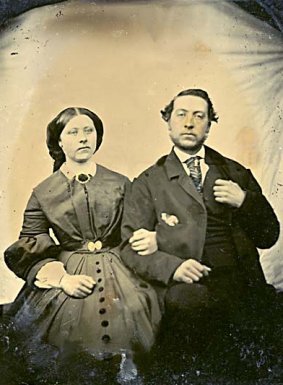
October A Yorkshire potter named John Morton saw a chunk of Burrard Inlet coal on display in a New Westminster shop window and wondered if near that coal there might be fine clay suitable for pottery. There was clay, but of a quality suitable only for bricks, and so Morton and two associates—his cousin Sam Brighouse and William Hailstone—preempted (November 3) 550 acres, at a price equivalent to $1.01 an acre, with a view to becoming brickmakers. They spent, some thought, far too much money for the remote “Brickmaker’s Claim,” and one newspaper report derisively described them as “three greenhorn Englishmen.”) The “three greenhorns” built a cabin near the north foot of today’s Burrard Street and began to raise cows.
The native people, the original inhabitants of this bountiful corner of the world, found their occupation of the land ended, after thousands of years, with numbing speed.
A stone obelisk was erected this year to mark the spot on the 49th parallel at Point Roberts from which all survey work would proceeds eastward. The road running directly north from this point was named Coast Meridian Road. Today Coast Meridian runs through the city of Port Coquitlam.
Billy Barker found gold at Williams Creek, and by 1870 more than 100,000 people had travelled the Cariboo Wagon Road to reach the bustling town of Barkerville. For a brief time Barkerville was the largest town in western Canada.
1863
The B.C. contingent of the Royal Engineers was disbanded. Some return to England, some opt to stay behind and these are given land grants. One of them is Sapper John Linn, after whom Lynn Valley, etc., in North Vancouver is named (and misspelled).
1864
November 9 The first export of lumber from Burrard Inlet to a foreign port when more than 250,000 board feet leaves for Australia.
1865
January 14 Seattle was incorporated.
April 11 Burrard Inlet’s first telegraph message goes out from Moody’s Mill on the North Shore to New Westminster.
April 14 The first telegraph message from the outside world arrives at Burrard Inlet, telling of the assassination of U.S. President Abraham Lincoln.
July 30 The first religious service is held on Burrard Inlet, conducted for the men of Moodyville by the Rev. Ebenezer Robson, a Methodist.
August 15 The New Westminster library is established with books donated by the Royal Engineers.
1866
August 6 The Crown Colonies of Vancouver Island and British Columbia are united and will be known as British Columbia. The capital is New Westminster. (That will change in 1868).
1867
March 30 Alaska is sold to the United States.
June On the south shore of Burrard Inlet Edward Stamp begins—with British financing—Vancouver’s first major industry. Stamp’s mill (it was at the north foot of today’s Dunlevy Street) built a flume from Trout Lake to its sawmill to sustain its steam-driven machinery.
July 1 Canadian Confederation, creating a new country away to the east called Canada, and naturally inspiring thoughts it might eventually stretch from sea to sea.
September 30 The arrival—in a rowboat—of John “Gassy Jack” Deighton. The Yorkshire-born Deighton, with a complexion, said a chum, of “muddy purple,” rowed into Burrard Inlet from New Westminster with his native wife, her mother, her cousin, a yellow dog, two chairs and a barrel of whiskey. With the help of workers from Stamp’s Mill he builds the Globe Saloon in, it is said, 24 hours.
1868
May 25 The capital of the colony of British Columbia is moved from New Westminster to Victoria.
July 18 The first marriage among the non-native population of Burrard Inlet takes place: the Rev. Edward White marries Ada Young and Peter Plant at Moody’s Mill.
August 8 The purchase by William and Thomas Ladner of 160 acres each on the banks of the Chilukthan Slough is recorded at New Westminster.
December 10 In England the second Earl Granville was named Secretary for the Colonies. The township of Granville (Gastown), Granville Street, Granville Island, etc., are all named for him.
1869
July Maximilian “Maxie” Michaud arrived at Burrard Inlet. He walked to Vancouver from Montreal. When he got here, aged about 30, he bought the New Brighton Hotel from its owner, Oliver Hocking.
July 2 The first post office in what is now the City of Vancouver opened. Postmaster was “Maxie” Michaud. It was an unofficial post office, located in the kitchen of his hotel.
Also in 1869
James A. Raymur took over Hastings Sawmill from Capt. Edward Stamp. When he first cast eyes upon the squalor and haphazardness of the mill and its surroundings, he gazed about him in horror and delivered one of the great Vancouver quotes: “What is the meaning of this aggregation of filth?” He cleaned it up fast.
Gastown’s first jail was two cells built of logs. They stood in what is now Gaoler’s Mews in Gastown.
1870
March 10 Granville, known colloquially as Gastown, came into being with government approval of the townsite, which had been surveyed in February. The townsite was named for the Earl Granville, colonial secretary at the time. (In 1886 it will be renamed Vancouver.)
Also in 1870
The first salmon cannery was built in New Westminster.
1871
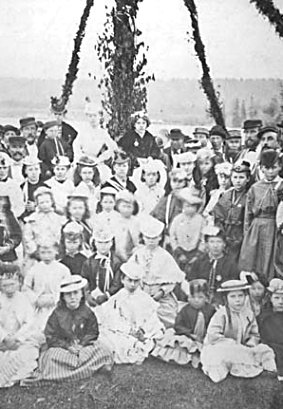
February 10 John Linn, one of Colonel Moody’s “sappers” (the Royal Engineers who built our first roads), received 150 acres of land in return for his military service. Linn, who was described as “a strapping Scottish stonemason,” settled with his wife and six children at the mouth of a creek on the north shore of Burrard Inlet, a creek that came to be named (misspelled Lynn) for him.
July 20 British Columbia joins the Canadian Confederation. Over his saloon, John “Gassy Jack” Deighton raises a Canadian flag, the first to be seen in this area.
December 26 The Masons’ Grand Lodge of British Columbia opened.
1872
June 12 Superintendent John Jessop visited the school at Fort Langley. The teacher, James Kennedy, was in the process of being fired, the school was about to close because of mosquitoes, and there were no maps or blackboards.
October The first bridge was built across False Creek.
Also in 1872
British Columbia placed an Agent-General in London to further the aims of the province in the U.K.
Amor De Cosmos became Premier of British Columbia.
1873
April 26 The District of Langley was incorporated, with James Mackie as the first warden (like an appointed mayor).
December 22, 1873 Moody’s mill on the North Shore burned to the ground, but was quickly rebuilt with lumber and bricks purchased from the Hastings Mill, its competitor across the inlet.
Also in 1873
Some say the McCleery farmhouse, built this year (demolished in 1956), was the first house constructed within what would become the City of Vancouver. But the Three Greenhorns built their cabin in 1862. The McCleery land is a golf course today.
The Eleanora, built from a scow and powered by an engine from a threshing machine, began service as a ferry across Burrard Inlet. The engine was later fastened with chains attached to a buoy so it can be located if it falls through the hull in mid-trip. Locals nickname it the “Sudden Jerk.”
“Navvy Jack” Thomas built the first house in what will become West Vancouver, on his waterfront property, and married the daughter of a Squamish chief. (The house was moved and still stands, much altered, at 1768 Argyle Street.)
John Sullivan Deas, a free black man from Carolina, opened a cannery on what will later be called Deas Island. Deas sold out in 1878, and leaves B.C.
1874
April 1 Henry Harvey became the official postmaster for Granville Townsite. He’d been preceded by the unofficial Maximilien Michaud.
Also in 1874
A stagecoach line began from Burrard Inlet to New Westminster.
Alexander Graham Bell began work on the telephone.
1875
By 1875 a village that had sprung up around the north shore mill—owned by a Maine-born American logger named Sewell Moody, no relation to Colonel Moody—was called Moodyville in his honor.
April 29 Mabel Ellen Springer was born in Moodyville, the first white child born on Burrard Inlet. She was a journalist in Vancouver for 30 years.
May 29 John “Gassy Jack” Deighton died.
June 1 The first sod of the Canadian Pacific Railway was turned at Fort William, Ontario.
1876
A census of Stanley Park found about 80 “Skwamish” people living there. Their chief is Supple Jack.
1878
June 29 The Moodyville Tickler, Burrard Inlet’s first newspaper, appeared. It had a very brief, tongue-in-cheek existence. For example, the more you paid for your obituary the more glowing it became.
1880
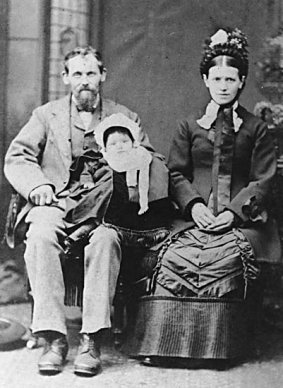
January 5 Before 1881 in B.C. the head of a municipal council —equivalent to today’s mayor—was appointed to the office and was called a warden. The first warden of Surrey, Joseph Shannon, was appointed today.
May Work on the rail line from Yale to New Westminster began.
December 31 A New Year’s Eve ball was held at Deighton House in Granville.
The Avison Trail in Stanley Park is named for Henry Avison, the first employee of the Vancouver Park Board. He cut the first trails and roadways in the park. Avison and his family lived in the park in the 1880s.
Also in 1880
The first general store in Ladner’s Landing began as a supply tent on a wharf. During the 1880s Thomas McNeely will build it into a prosperous business.
Quebec composer Calixa Lavallee wrote a tune we know today as O Canada.
1881
February 16 A land grant of 25,000 acres of land was given to the CPR in exchange for its extending its line to Granville (Vancouver). Some 6,000 of those acres were in the city itself.
February Surrey Council began to offer a bounty of $2.50 for bears.
April 15 The maiden voyage of The Senator, a steam tug built at Moodyville, ferrying passengers and mail (and occasionally cattle) across Burrard Inlet.
May 15 St. James Anglican Church at Granville was consecrated. It will be destroyed in the Great Fire of 1886.
September The influential London Truth newspaper editorializes: “British Columbia is not worth keeping. It should never have been inhabited at all. It will never pay a red cent of interest on the money that may be sunk in it.”
Also in 1881
The first municipal hall was built at Surrey Centre. It will be used until 1912.
Surveys began in Port Moody for the CPR railway line.
Chinese entrepreneur Yip Sang (born September 6, 1845) arrived in Vancouver. He will establish the import/export firm of Wing Sang Company. Its 1889 building at 51-67 East Pender is the oldest in Chinatown. See Saltwater City by Paul Yee for an excellent history of Chinatown. Yip Sang is prominently featured in Yee’s book.
“Captain Jack, the Poet Scout” brings a Wild West show to New Westminster.
1882
February 4 The first electricity came to B.C., at the Moodyville sawmill on the north shore of Burrard Inlet. These were the first electric lights on the Pacific Coast north of San Francisco. The mayor and council of Victoria made a special trip to see the electric lights.
Also in 1882
The English Cannery began operating in Steveston. The cannery was sold to Henry Bell-Irving. In 1895 it burned down and, upon rebuilding, was renamed the Phoenix Cannery. The site is now part of the Britannia Heritage Shipyard.
Spratt’s Oilery, a floating fish oil plant and cannery, was established in Coal Harbour. It used dynamite to catch herring.
Saint John the Divine Anglican Church was floated across the river to Maple Ridge from its original location at Derby (near Fort Langley). Built in 1859, it is still active, the oldest functioning church in B.C.
The Red Cross Brewing Company was built on the Granville waterfront, likely the area’s first brewery. By 1892 Red Cross was shipping all over the province and was outselling the imported brands . . . imported, that is, from Eastern Canada and featuring familiar names like Molson, Carling and Labatt.
1883
February 2 The first sale of Port Moody lots was held at New Westminster. By March there will be 11 houses there.
March 12 The Duke of Abercorn unloaded at Port Moody a shipment of rails, destined for the CPR, from Cardiff, Wales.
October A locomotive arrived . . . by ship! It will be used for local work.
December 12 The first local telephone call was made—it was between Port Moody and New Westminster.
Also in 1883
The Elgin Hotel is built in Port Moody. This, and a floating boarding house and the Caledonian Hotel, provide accommodation for the men building the CPR.
John Irving of New Westminster bought out the Hudson Bay Company ships and formed the Canadian Pacific Navigation Company.
Teacher Agnes Cameron hung a sign on the Hastings Mill School door: Irate Parents Will Be Received After 3 P.M.
The CPR’s Lauchlan Hamilton arrived in Vancouver. He will survey and build Granville’s (Vancouver’s) downtown streets.
1884
March 17 The K de K steam ferry began the first ferry service between New Westminster and Brownsville (now part of Surrey).The ferry licence was sub-let to Angus Grant of New Westminster who built the ferry and named it after a close friend with the unusual name of Knyvett de Knyvett. We learn that from this fine website.
June 20 A Roman Catholic church was consecrated at Ustlawn village, the Indian mission village in North Vancouver, and named Sacred Heart. It becomes (and remains) a familiar landmark, replacing a tiny chapel built in 1868 by those people of the Squamish Nation who had converted to Catholicism. A second spire was added in 1910 when renovations are made, and the church was rededicated as St. Paul’s. You can still see it on the North Shore skyline.
August 6 The CPR’s head man William Van Horne visited Granville.
September 16 CPR President Van Horne asked the railway’s directors to choose the township of Granville (Gastown), not Port Moody, as the terminus of the new railway. Port Moody goes ballistic. He also recommended it be renamed Vancouver. The story, likely true, is that an excited Van Horne was rowed around what became Stanley Park by the CPR’s local land commissioner Lauchlan Hamilton—another version has realtor Alexander Wellington Ross at the oars—and, gazing around in wild surmise, exclaimed aloud that the city was destined to be a great one, and must have a name commensurate with its greatness. Nobody would know where “Granville” was, Van Horne told whoever was rowing, but everyone knew of Capt. Vancouver’s Pacific explorations and would instantly know where this important new link in world shipping was located.
August In what may be the first use in print of the name “Vancouver” for our city a Portland, Oregon newspaper does a story. (I have that interesting newspaper item, will quote it at length in the book.)
October 22 The Robert Kerr left Liverpool under Capt. Edward Edwards, who died aboard her August 10, 1885. One of the crew is a young Barbados native named Seraphim Fortes. He will become famous here.
December 18 The name “Vancouver” for our city was mentioned in a Montreal newspaper.
December 23 Incorporation date of Pioneer Lumber Company of Port Moody, the first of several lumber companies to operate in that area.
Also in 1884
A massive cantilever bridge, to carry the CPR across the Fraser at Lytton, arrived in sections at Port Moody by ship from Britain.
A forest fire swept through the future West Vancouver from Hollyburn to Eagle Harbour.
Canoe Pass school opened in Delta with Frederick Howay (later to become well known as a judge, orator and historian) as the first teacher.
Huge, knot-free beams, 34 m (112 feet) long by 70 cm (28 inches) square were shipped to Beijing’s Imperial Palace from Burrard Inlet sawmills.
An anti-potlatch law was passed, although it failed to stop the practice, central to Northwest Coast Native culture. The law stayed in place until 1951.
The Chinese Benevolent Society was founded in Vancouver.
The Oppenheimer brothers set up in Vancouver. It is the oldest still-operating company in the city.

